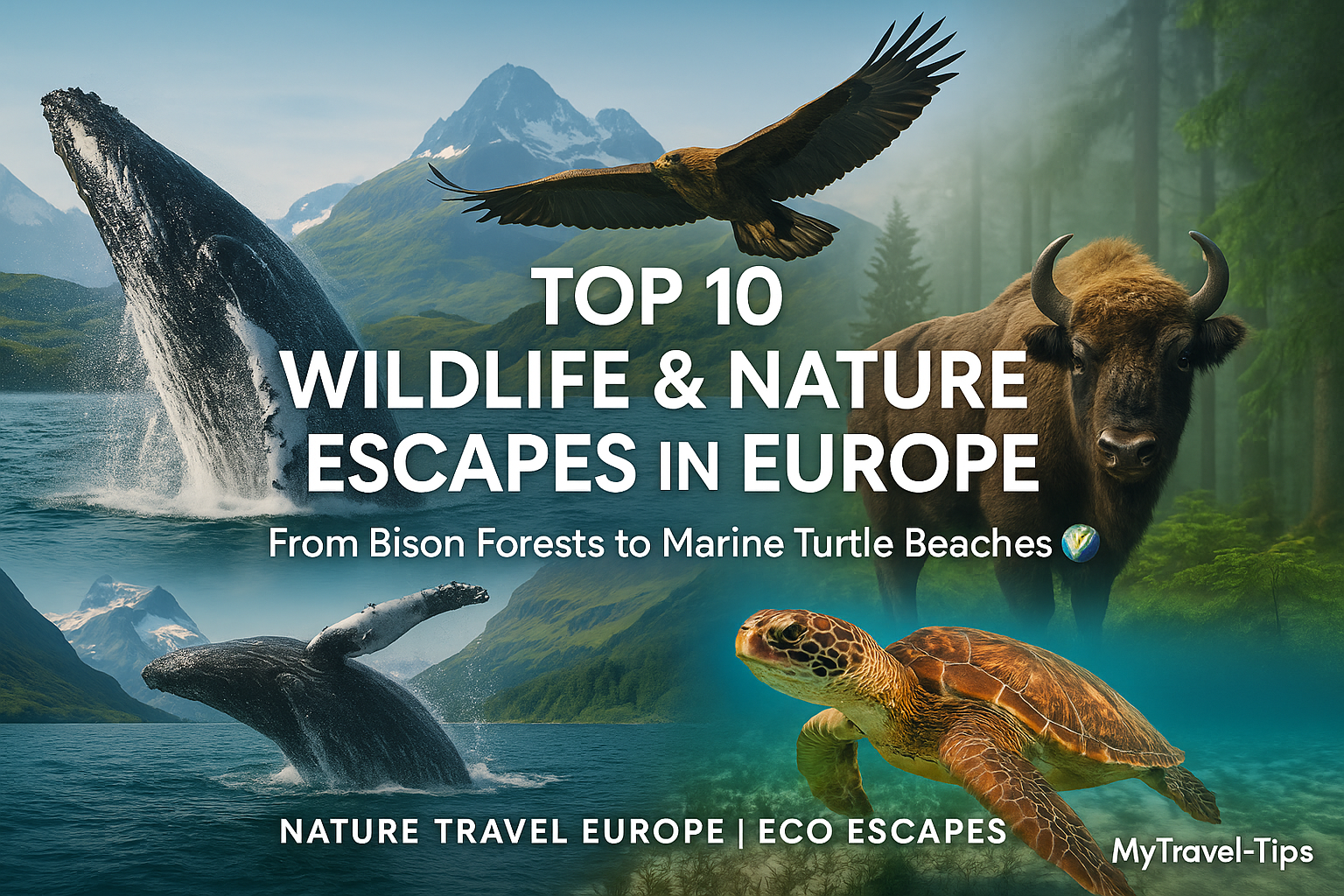Top 10 Winter Destinations in Europe – Nature, Snow & Silence
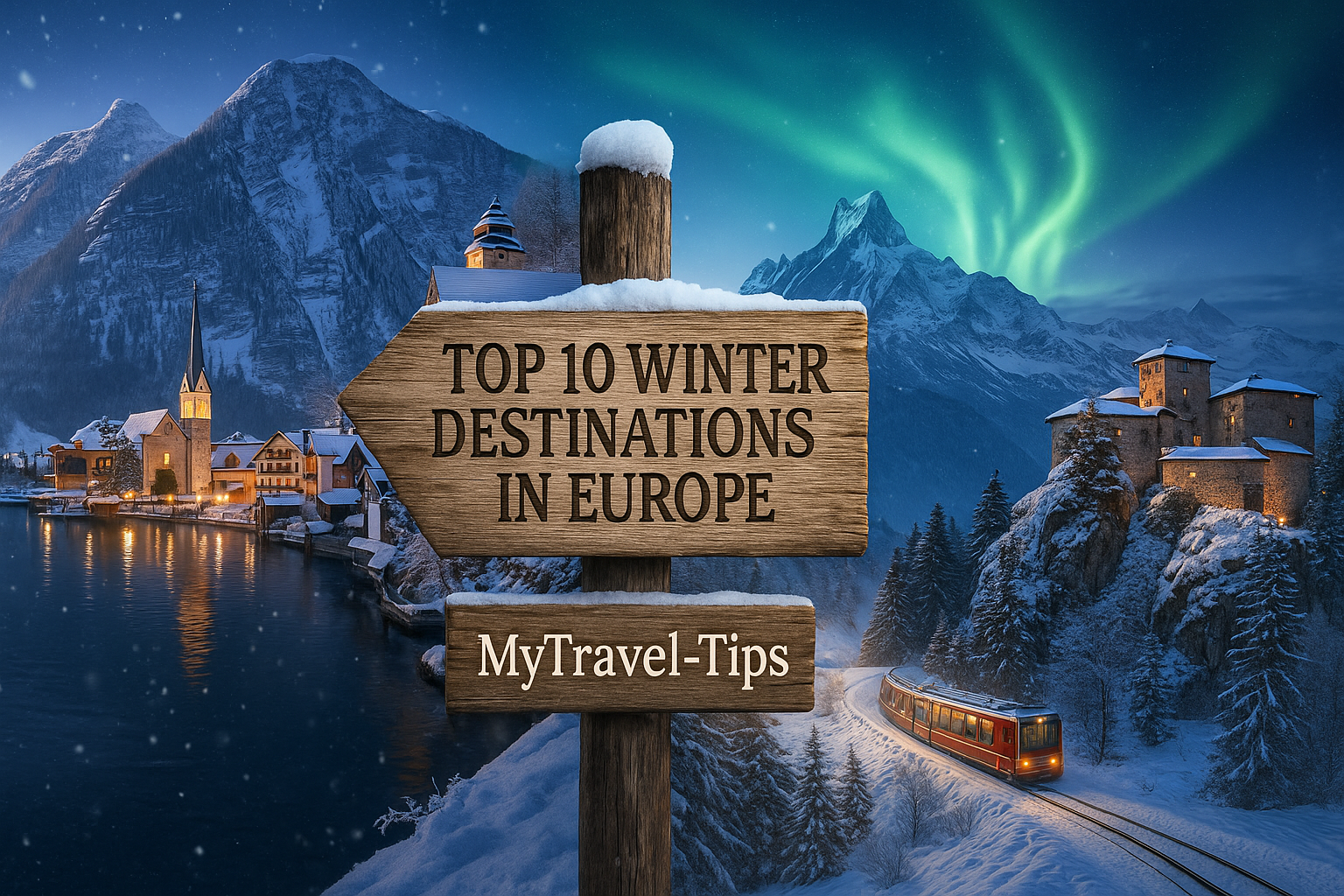
Top 10 Winter Destinations in Europe
Europe transforms into a magical wonderland each winter, offering snow-covered villages, dramatic mountain landscapes, and unforgettable nature escapes. Whether you're chasing the Northern Lights, strolling through a medieval town blanketed in snow, or cozying up in a wooden cabin under the Alps, these winter destinations in Europe promise natural beauty and serene charm. From Austria to Norway, here are the best spots to feel the season’s soul.
🔎 Explore Europe’s Top Winter Nature Escapes
- ❄️ Hallstatt, Austria – Frozen Lake Dreams
- 🐏 Abisko, Sweden – Aurora & Arctic Wilderness
- 🏰 Český Krumlov, Czechia – Snow-Dusted Fairytale Town
- 🏔️ Chamonix, France – Alpine Majesty & Mont Blanc
- 🌌 Tromsø, Norway – Northern Lights Gateway
- 🧣 Colmar, France – Alsace Magic in Winter Glow
- 🌲 Zakopane, Poland – Wooden Cabins & Tatra Peaks
- 🚞 Zermatt, Switzerland – Glacier Views & Winter Rails
- 🌨️ Meteora, Greece – Snow Meets Stone Monasteries
- 🦌 Val di Funes, Italy – Dolomites in a Snow Globe
1. Hallstatt, Austria – Frozen Lake Dreams
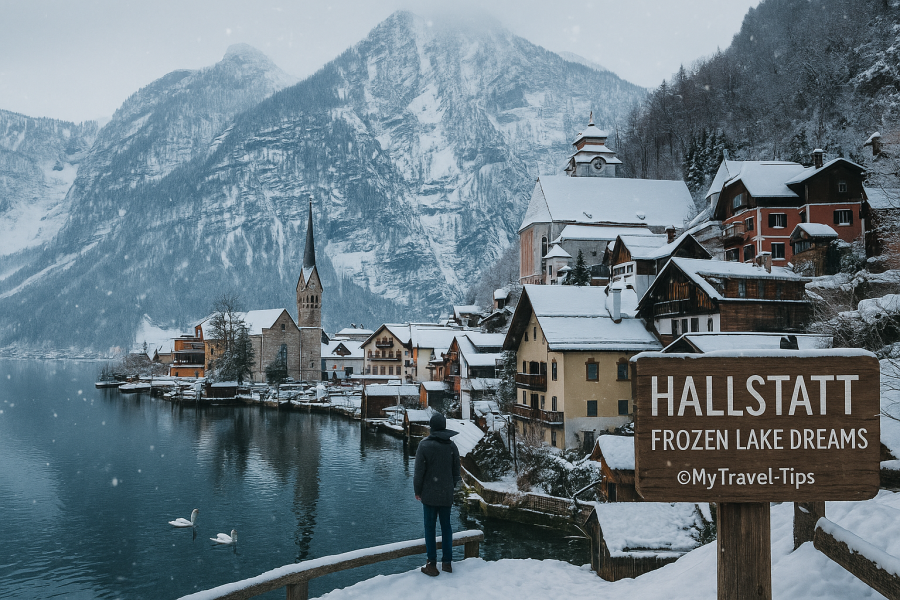
Nestled on the edge of a glacial lake and backed by towering snow-draped peaks, Hallstatt in winter is a serene masterpiece of nature and Austrian heritage. As snow gently coats the pastel facades and swans glide over glassy waters, it’s no surprise that this UNESCO village is considered one of the most picturesque winter escapes in Europe. Unlike ski towns, Hallstatt is made for slow travel — for watching fog roll over the lake, wandering cobblestone streets under falling snow, and taking in panoramic views from the salt mine skywalk.
Winter here offers a peaceful alternative to crowded alpine resorts. The surrounding Dachstein Alps provide opportunities for snowshoeing and scenic hikes, while the village itself invites visitors to explore charming bakeries, ancient churches, and cozy lakeside inns. The Hallstatt Skywalk offers unmatched views of a snow-blanketed valley below, while nightfall paints the lakefront in warm, golden hues reflected off icy waters.
- Snow Season: Mid-December to early March
- Top Nature Experiences: Frozen lake walks, Hallstatt Skywalk views, and ferry rides framed by mountains
- Where to Stay: Alpine guesthouses with balconies, or boutique inns right by the lake
- Getting There: Train to Obertraun, followed by a short ferry or bus ride — one of Europe’s most scenic approaches
💡 Nature Highlight: On calm mornings, Hallstatt Lake becomes a perfect mirror — reflecting the snow-covered village and Dachstein cliffs in surreal symmetry. A winter photographer’s dream.
Whether you're sipping glühwein on a balcony or catching the snow fall over candlelit rooftops, Hallstatt is less about activity and more about atmosphere — a place to feel winter slowly. It’s not just a destination, it’s a pause in time.
2. Abisko, Sweden – Aurora & Arctic Wilderness
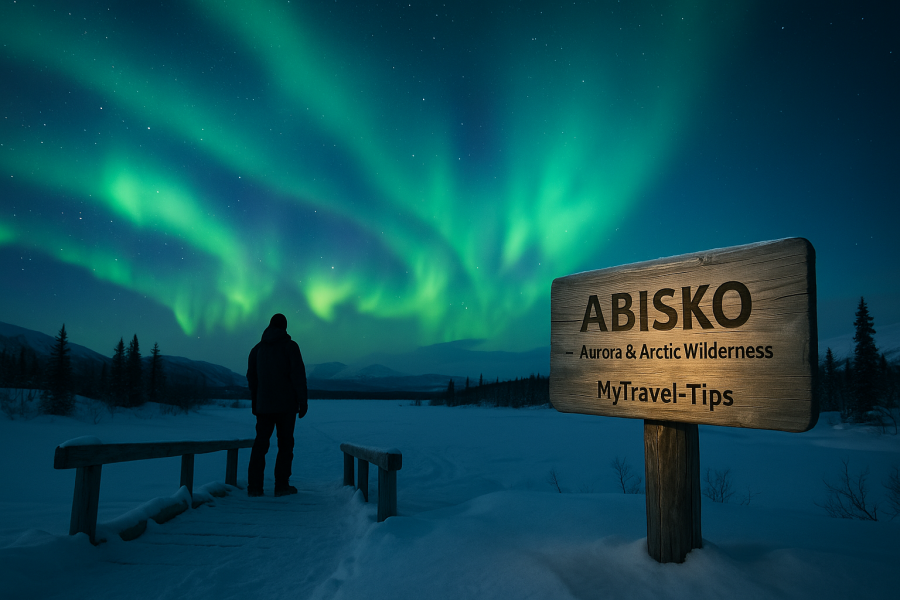
Located 200 kilometers north of the Arctic Circle, Abisko in Swedish Lapland offers one of Europe’s most dramatic and remote winter experiences. Known as one of the world’s best places to see the Northern Lights, Abisko National Park delivers unmatched natural beauty — from frozen waterfalls and snow-coated forests to endless twilight skies. This is where nature whispers in pure silence and the aurora dances undisturbed across the dark horizon.
What makes Abisko unique is its **microclimate** — the skies above the nearby Torneträsk Lake remain unusually clear throughout winter, offering an almost guaranteed chance to witness the aurora borealis. Visitors can ride the chairlift up to the Aurora Sky Station or take guided snowshoe walks into the wilderness. If you’re craving raw winter nature — this is the edge of Europe, untouched and unforgettable.
- Snow Season: November to late March (peak aurora visibility from Dec–Feb)
- Top Nature Experiences: Aurora Sky Station, cross-country skiing, frozen canyon hikes, wildlife safaris
- Where to Stay: Eco-lodges, Aurora hostels, STF Turiststation with nature-focused comfort
- Getting There: Night train or flight to Kiruna → 1.5 hr train to Abisko — scenic Arctic journey
💡 Nature Highlight: Thanks to minimal light pollution and cloud-free skies, Abisko offers some of the clearest and longest Northern Lights sightings in all of Europe.
Winter in Abisko isn’t for rushing. It’s for witnessing silence, sky, and snow in their rawest form — a place where the aurora is not a tour but a nightly ritual of nature. If you want to experience Arctic wilderness with guaranteed wonder, this is where the journey should lead.
3. Český Krumlov, Czechia – Snow-Dusted Fairytale Town
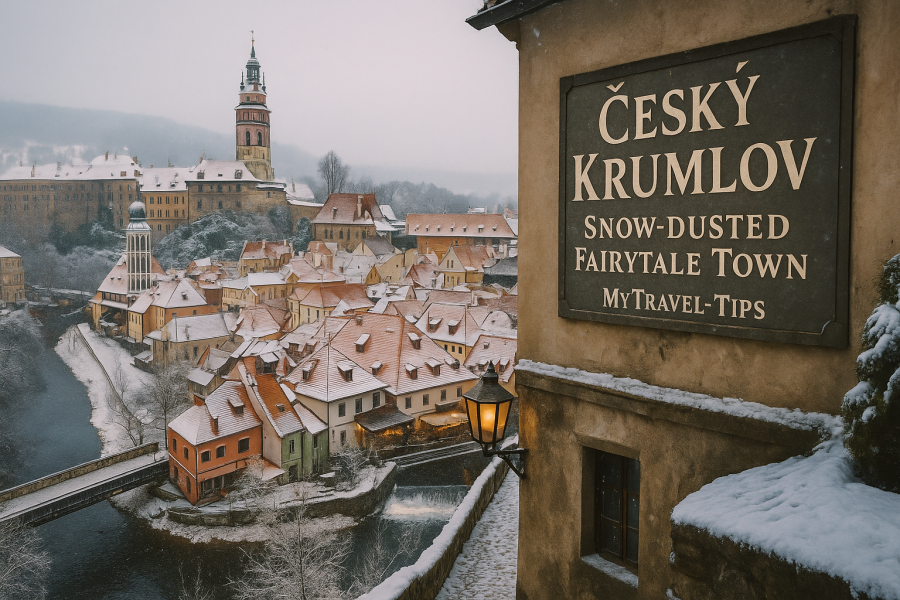
If you’re seeking a true winter fairytale in Europe, few places match the charm of Český Krumlov in southern Czechia. Set along the Vltava River and wrapped around a 13th-century castle, this UNESCO-listed town becomes a snow-dusted dreamland during the colder months. Cobbled lanes glisten with frost, medieval bridges lead to candlelit taverns, and the castle tower peeks through morning mist like something from a painting.
Unlike crowded winter cities, Český Krumlov offers a quiet, romantic atmosphere ideal for nature lovers and slow travellers. You can stroll riverside paths under falling snow, hike into the nearby Blanský Forest for views over the valley, or warm up with mulled wine in one of the centuries-old cellars. Every corner here is postcard-worthy — especially in winter when the town is peaceful and authentic.
- Snow Season: Late November to February, with best snow scenes in December–January
- Top Nature Experiences: Riverwalk trails, castle hill views, winter hikes to Křížová hora (Cross Hill)
- Where to Stay: Boutique heritage hotels, cozy B&Bs inside restored Baroque townhouses
- Getting There: Train or bus from Prague (~3 hours), best visited for 2–3 nights
💡 Nature Highlight: In deep winter, snow settles on every roof and railing — transforming the town into a monochrome painting, perfect for golden-hour photography.
Český Krumlov is not just scenic — it’s soulful. The rhythm slows, the light softens, and nature blends perfectly with human craft. It’s the ideal retreat for those who want to feel the poetry of a European winter.
4. Chamonix, France – Alpine Majesty & Mont Blanc
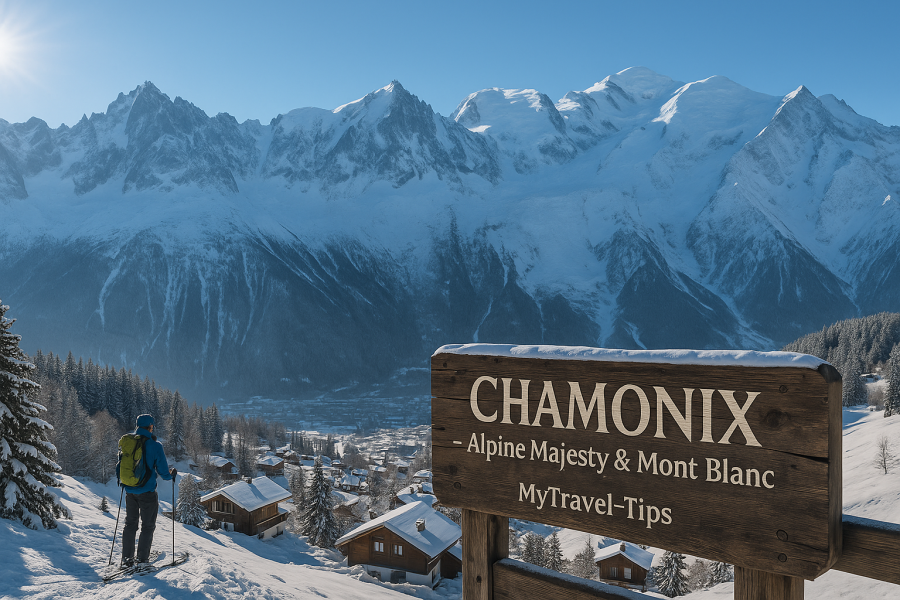
Towering beneath the mighty Mont Blanc, Chamonix is where winter takes on an epic scale. This legendary French alpine town isn’t just for skiers — it’s a paradise for hikers, photographers, and nature lovers who want to experience the raw, vertical beauty of the Alps in their most dramatic form. From icy glaciers to pine-framed valleys, everything here feels oversized and unforgettable.
In winter, Chamonix transforms into a nature theater. Ride the famous Aiguille du Midi cable car for sky-high views of jagged peaks and vast snowfields. Walk through alpine forests dusted in fresh powder. Visit Mer de Glace — France’s largest glacier — or simply soak in the scenery from a hot tub at a chalet balcony. Whether you’re carving slopes or quietly admiring the snow-draped majesty of Mont Blanc, Chamonix delivers a cinematic winter like nowhere else.
- Snow Season: Late November to April (best views from mid-Dec to mid-March)
- Top Nature Experiences: Aiguille du Midi, glacier treks, snow hiking in Vallée Blanche
- Where to Stay: Mountain-view chalets, spa lodges, or cozy guesthouses in Les Bossons
- Getting There: 1-hour drive from Geneva or scenic train ride via Martigny (Switzerland)
💡 Nature Highlight: The panoramic view from Aiguille du Midi (3,842 m) stretches across three countries — with snow peaks and glaciers as far as the eye can see.
Chamonix is more than a ski town — it’s the birthplace of mountain awe in Europe. With Mont Blanc standing sentinel, every snowy trail and frozen lake feels like part of something grander. This is where winter reaches its highest expression.
5. Tromsø, Norway – Northern Lights Gateway
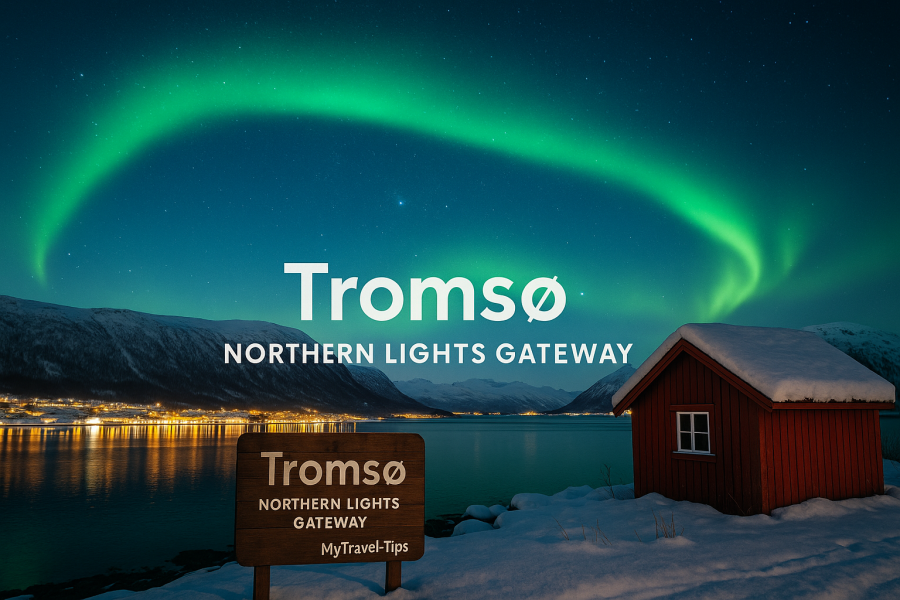
Situated above the Arctic Circle, Tromsø is often called the “Gateway to the Northern Lights” — and for good reason. Surrounded by snowy fjords, frozen seas, and untouched tundra, this lively Arctic town offers one of the highest chances of witnessing the aurora borealis in Europe. But Tromsø is more than just auroras — it’s a blend of wild landscapes and Scandinavian culture, where reindeer sledding meets modern cafés and polar museums.
In winter, Tromsø’s skies glow with ethereal green lights, while the city below hums quietly with life. You can chase the auroras on guided snowmobile tours or soak in the icy beauty from a remote cabin in the fjords. During daylight, explore Arctic wildlife parks, frozen coastal trails, or the iconic Arctic Cathedral. With its mix of wilderness access and city comforts, Tromsø is a perfect balance for nature-seeking travelers who don’t want to sacrifice warmth or Wi-Fi.
- Snow Season: November to April (aurora best seen Dec–Feb)
- Top Nature Experiences: Northern Lights safaris, fjord cruises, snowshoeing, husky sledding
- Where to Stay: Glass-roofed cabins, fjord lodges, or central hotels with heated terraces
- Getting There: Direct flights from Oslo or train to Narvik + transfer; modern infrastructure despite remote location
💡 Nature Highlight: With minimal light pollution and direct access to fjord-facing viewpoints, Tromsø offers some of the longest and most vivid aurora displays in Europe.
Whether you're photographing the lights from a mountain ridge or warming up with cinnamon rolls downtown, Tromsø makes the Arctic feel welcoming. It’s the ideal winter destination for those who want wilderness and wonder without isolation.
6. Colmar, France – Alsace Magic in Winter Glow
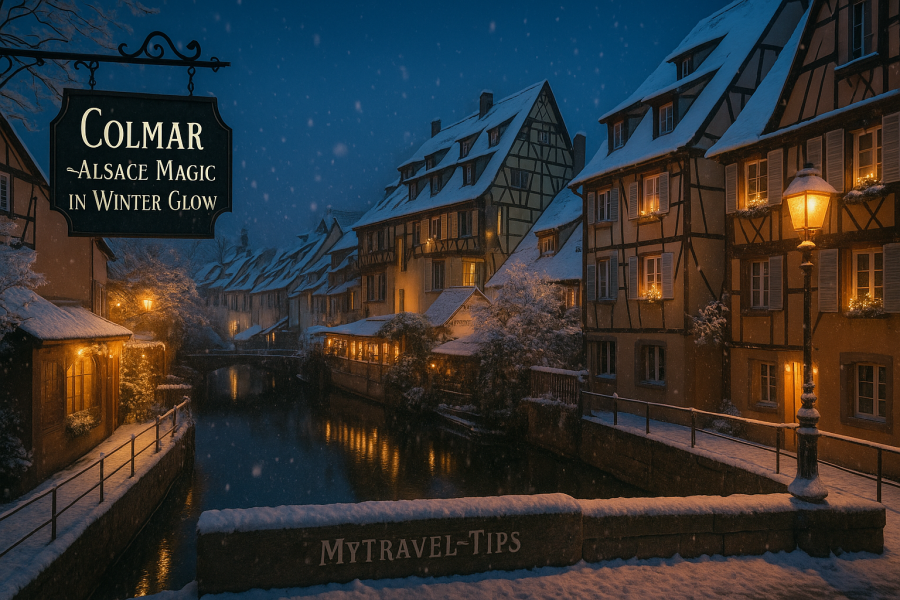
Tucked in the heart of Alsace, Colmar is one of France’s most enchanting towns — and in winter, it glows with postcard perfection. Cobblestone alleys weave between half-timbered houses painted in soft pastels, while canals reflect the twinkle of holiday lights and snow-dusted shutters. As Christmas fades, the glow lingers — transforming Colmar into a quiet, elegant escape surrounded by vineyards and Vosges mountains.
While many come for the famed holiday markets, winter in Colmar continues to charm well into January and February. The Old Town feels like a living painting, perfect for slow strolls, cozy cafés, and romantic evenings. Nature lovers can explore nearby snow-covered vineyards or take a day trip to the white forests of the Ballons des Vosges Natural Park. For travelers seeking a blend of culture and countryside calm, Colmar is a hidden gem.
- Snow Season: December to February (snow more likely in surrounding hills)
- Top Nature Experiences: Canal walks, winter vineyard drives, hiking in Ballons des Vosges
- Where to Stay: Boutique guesthouses in timbered buildings, or vineyard-view chalets just outside the city
- Getting There: 30 mins from Strasbourg by train or scenic road trip via Route des Vins
💡 Nature Highlight: The contrast of pastel buildings against snowy rooftops and blue canal reflections gives Colmar its “storybook in winter” atmosphere — best seen at dawn or dusk.
Colmar invites you to slow down and soak in soft magic. It’s a place where the beauty is in the details — flower boxes turned frosty, candles in centuries-old windows, and still reflections on the water.
7. Zakopane, Poland – Wooden Cabins & Tatra Peaks
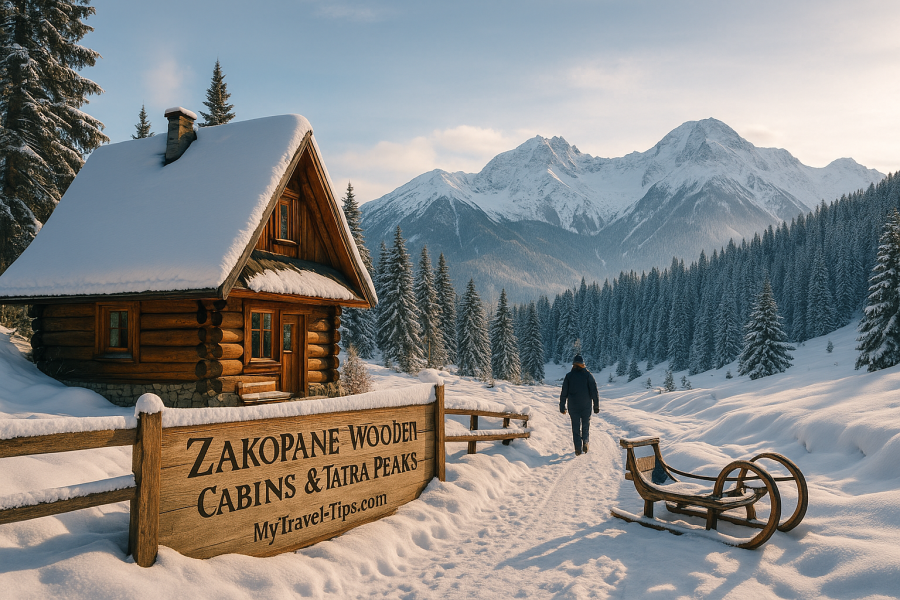
Known as the “Winter Capital of Poland,” Zakopane sits at the foot of the Tatra Mountains, offering a postcard-perfect alpine experience with Eastern European soul. Its traditional Góralski wooden architecture, snowy spruce forests, and lively highland culture create a winter retreat that feels both rugged and welcoming. Whether you’re hiking snowy trails, sipping warm grzaniec (mulled wine), or relaxing in a wooden sauna, Zakopane delivers a peaceful escape for nature lovers.
The town itself is full of charm — markets selling woolen mittens and oscypek cheese, rustic log houses with smoking chimneys, and quiet forest walks that begin right from your doorstep. You can snowshoe to Lake Morskie Oko, take a horse-drawn sleigh ride, or visit the thermal pools in nearby Bukowina Tatrzańska. For an authentic, scenic, and budget-friendly winter getaway, Zakopane is one of Europe’s best-kept secrets.
- Snow Season: Mid-December to early March (heaviest snow in January)
- Top Nature Experiences: Tatra National Park hikes, sleigh rides, wooden cabin stays, thermal spas
- Where to Stay: Góralski-style wooden chalets, cozy guesthouses with mountain views
- Getting There: 2–3 hrs from Kraków by bus/train; easy winter access despite mountain setting
💡 Nature Highlight: The scenic trail to Lake Morskie Oko in winter is one of the most peaceful snow hikes in Central Europe — surrounded by icy cliffs and pine forests.
Zakopane is where comfort meets wilderness — a place of mountain legends, wooden warmth, and pristine snowscapes. Perfect for families, couples, and solo winter dreamers.
8. Zermatt, Switzerland – Glacier Views & Winter Rails
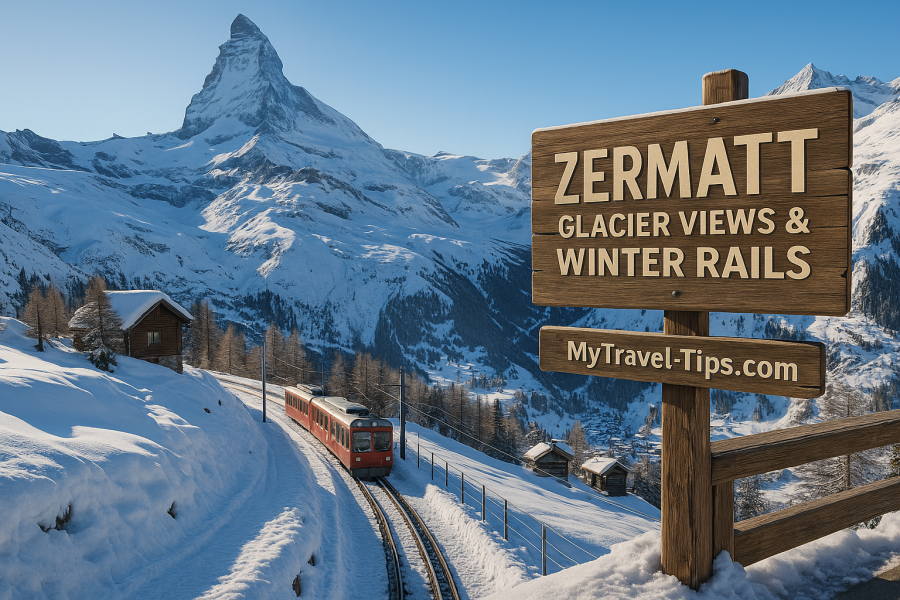
At the base of the legendary Matterhorn lies Zermatt — a pristine car-free mountain town where glaciers, alpine railways, and panoramic decks converge in perfect harmony. Whether you arrive via the world-famous Glacier Express or take the cogwheel train up to Gornergrat, Zermatt delivers one of the most breathtaking winter scenes in Europe — complete with dramatic peaks, glacial valleys, and surreal silence.
What makes Zermatt special is how deeply it’s integrated with nature. Every path leads to a viewpoint, every chalet faces a mountain, and every winter rail journey feels like part of a dream. The town itself is filled with wooden lodges, gourmet mountain huts, and spa hotels that frame the Matterhorn like a painting. Even if you don’t ski, you’ll find magic here — from snowy forest hikes to the calm of Riffelalp’s steaming outdoor pool surrounded by snow.
- Snow Season: Late November to April (peak beauty in Jan–Feb)
- Top Nature Experiences: Glacier Express ride, Gornergrat train views, winter hiking trails, Matterhorn vistas
- Where to Stay: Mountain-view chalets, spa resorts, or train-access eco-lodges
- Getting There: Train only – Zermatt is car-free. Access via Brig, Täsch, or directly with the Glacier Express
💡 Nature Highlight: The Gornergrat railway reaches 3,089m — offering sweeping views of 29 peaks over 4,000 meters, including the glowing face of the Matterhorn.
Zermatt is not just a destination — it’s a journey. A place where the path through snow is just as beautiful as the view at the top. If you love rail adventures, icy landscapes, and alpine luxury, this is your winter dreamland.
9. Meteora, Greece – Snow Meets Stone Monasteries
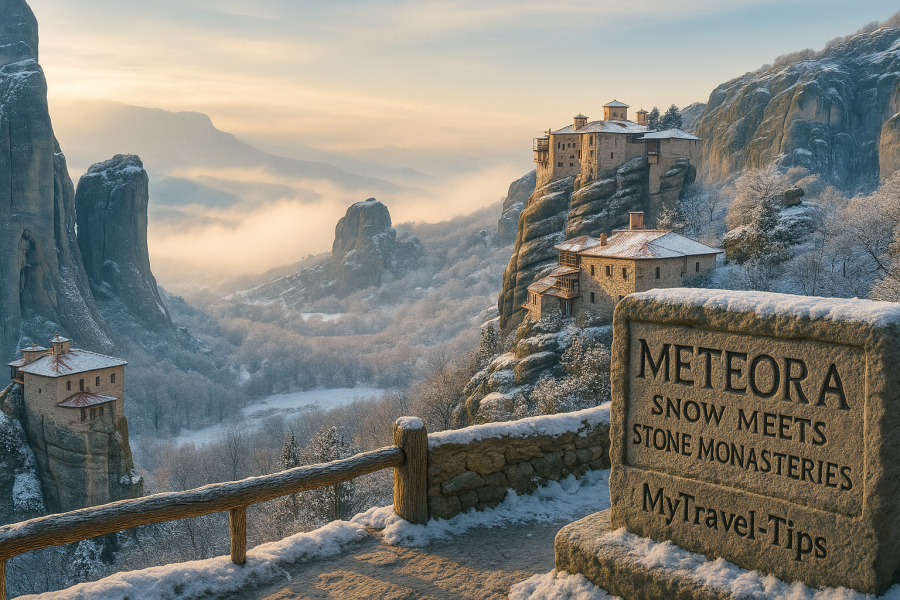
Perched atop giant rock pillars in central Greece, Meteora is one of Europe’s most mystical landscapes — and in winter, it becomes even more awe-inspiring. Snow settles on ancient monasteries clinging to the cliffs, creating a surreal fusion of stone, silence, and sky. Unlike Greece’s sun-kissed islands, Meteora offers a completely different side of the country — spiritual, serene, and perfect for winter explorers.
The UNESCO-listed Meteora monasteries, once accessible only by rope ladders, now welcome travelers via winding paths and cliffside stairways. In winter, the crowds vanish, and the atmosphere becomes deeply meditative. Snow highlights every crack in the stone, and the fog rolling through the valley adds to the mystique. You don’t need to be religious to feel the energy here — nature and history blend into something sacred.
- Snow Season: December to February (best chance of snow on peaks mid-Jan)
- Top Nature Experiences: Cliff walks, winter photography trails, sunrise hikes around Kastraki
- Where to Stay: Boutique guesthouses in Kastraki or Kalabaka with valley views
- Getting There: Train from Athens to Kalabaka (4–5 hrs), then taxi or short hike to viewpoints
💡 Nature Highlight: After snowfall, Meteora’s stone cliffs glow golden at sunrise, with white-tipped peaks rising above morning mist — perfect for meditative treks and drone photography.
Meteora is where winter silence meets ancient wonder. A destination that makes you pause, look up, and feel something timeless. If you're craving solitude and scenic impact — this is your place.
10. Val di Funes, Italy – Dolomites in a Snow Globe
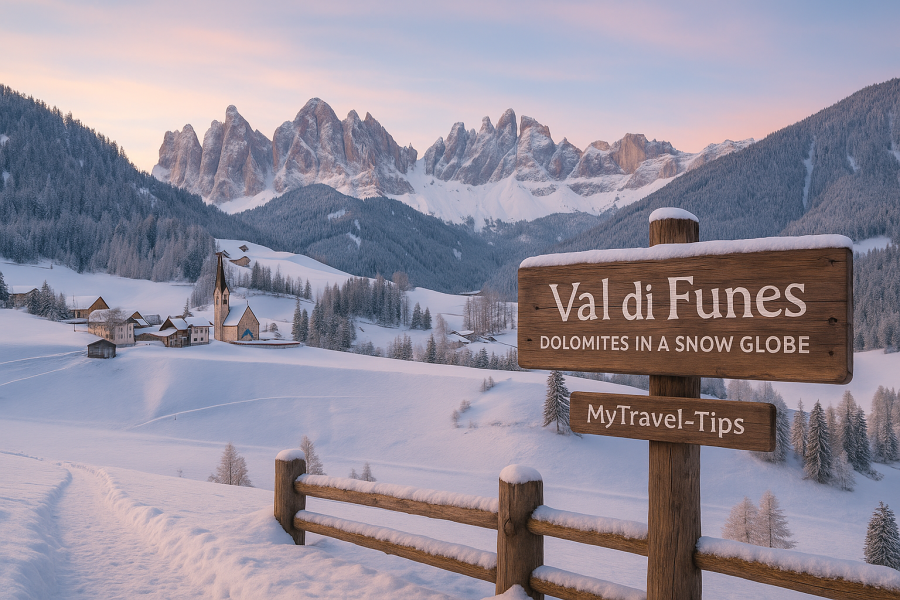
Tucked away in South Tyrol, Val di Funes (Villnöß) is a magical valley in the Dolomites that feels like it’s been plucked straight from a snow globe. Jagged limestone peaks rise dramatically behind gentle white meadows, alpine churches dot the landscape like ornaments, and the stillness of winter brings a calming rhythm to every step. It’s a place that photographers dream of — and where slow travel finds its perfect setting.
Unlike busier ski resorts, Val di Funes remains a quiet retreat focused on nature, simplicity, and stunning scenery. The iconic Church of St. Magdalena, with its picture-perfect backdrop, looks especially magical under fresh snow. You can snowshoe along forested ridges, hike to panoramic huts, or simply sit and watch the clouds drift over the Geisler Peaks. It’s not just beautiful — it’s peaceful to the core.
- Snow Season: Late December to March (peak whiteness in January–February)
- Top Nature Experiences: Snow trails to Rifugio Genova, church-view photo points, sledding paths, forest solitude
- Where to Stay: Family-run alpine lodges, wooden farmhouses, or mountain-view apartments
- Getting There: Closest access via Bolzano (1.5 hrs), then drive or local bus into the valley
💡 Nature Highlight: At sunrise, the snow-covered Geislergruppe peaks glow pink above the valley — a favorite for photographers and quiet winter seekers.
Val di Funes is a place to unplug and be present. Here, the magic isn’t in what you do — it’s in what you feel while standing in a silent valley beneath the snow-kissed Dolomites.
Closing Summary!
Winter in Europe is not just about cold—it’s about clarity, stillness, and scenes that take your breath away. From the glacier-rimmed rails of Switzerland to the monastery-crowned cliffs of Greece, this list of nature-based winter destinations reveals a softer, quieter side of the continent. Whether you're chasing the aurora, hiking through pine forests, or watching fog rise over a snow-dusted valley — each place reminds us that winter can be a season of peace, poetry, and presence.
These places aren’t always the most famous — but they’re the ones that stay with you. Because in the heart of Europe’s winter wilderness, time slows down. Roads are empty, trails are silent, and beauty is everywhere — if you walk slowly enough to see it.
🌍 Plan Your Escape: Looking for more offbeat or snow-draped spots? Explore our curated guides on Hidden Villages in Europe or Scenic Winter Train Routes to complement your journey.
Which destination would you choose to spend your winter in silence?
❄️ Let your heart answer — and let the snow show you the way.



